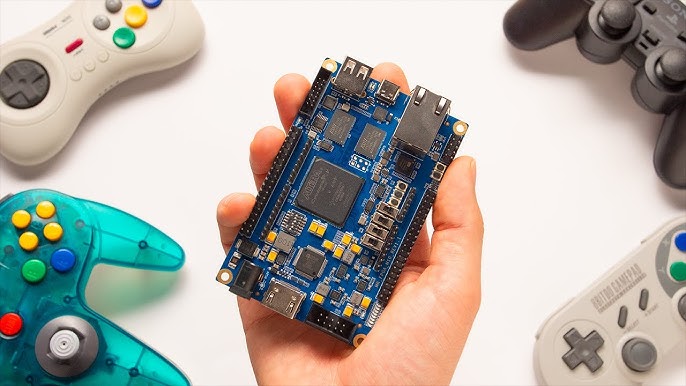Time: 2025-03-20 11:50:44View:
Programming a 3D game on an FPGA (Field-Programmable Gate Array) is a highly complex and specialized task that requires expertise in hardware design, 3D graphics, and game development. FPGAs are typically used for hardware acceleration, real-time processing, and custom logic implementation, rather than full game development. However, you can use an FPGA to accelerate specific parts of a 3D game, such as rendering, physics, or AI.
Below is a high-level guide to creating a 3D game with FPGA acceleration:

FPGAs are not designed to run full game engines like Unity or Unreal Engine. Instead, they can be used to:
Accelerate rendering pipelines (e.g., rasterization, ray tracing).
Perform physics calculations (e.g., collision detection, particle systems).
Handle custom AI or logic for game mechanics.
Process real-time inputs (e.g., keyboard, mouse, or gamepad).
FPGA Development Board: Select an FPGA board with sufficient resources (e.g., Xilinx Zynq, Intel/Altera DE10-Nano).
Development Tools:
Xilinx Vivado/Vitis or Intel Quartus for FPGA design.
HDL Languages: Use Verilog or VHDL for hardware design.
High-Level Synthesis (HLS): Use C/C++ with Xilinx Vitis HLS or Intel HLS for easier development.
Graphics Libraries: Use OpenGL, Vulkan, or custom rendering pipelines for 3D graphics.
Game Engine: Use a lightweight game engine or framework that can interface with the FPGA (e.g., SDL, OpenGL).
Host System: Use a CPU (e.g., ARM on Zynq) or a PC to run the game logic and handle non-accelerated tasks.
FPGA Accelerator: Offload computationally intensive tasks to the FPGA.
Communication: Establish a communication interface between the host and FPGA (e.g., PCIe, AXI, or custom protocols).
Rasterization or Ray Tracing: Implement a rendering pipeline on the FPGA.
Use fixed-point arithmetic for efficiency.
Optimize for parallelism (e.g., process multiple pixels or triangles simultaneously).
Shader Logic: Implement basic shaders (e.g., vertex, fragment) in hardware.
Framebuffer: Store the rendered image in FPGA memory and transfer it to the host for display.
Host System: Write the game logic (e.g., player movement, game rules) in C/C++ or Python.
FPGA Acceleration: Offload tasks like physics, AI, or rendering to the FPGA.
Input/Output Handling: Use the host system to handle inputs (e.g., keyboard, mouse) and outputs (e.g., display, audio).
Host-FPGA Communication: Use DMA (Direct Memory Access) or shared memory for data transfer.
Synchronization: Ensure proper synchronization between the host and FPGA.
Testing: Test each component (e.g., rendering, physics) independently before integration.
Parallelism: Leverage the FPGA's parallel processing capabilities.
Resource Utilization: Optimize for logic elements, DSP slices, and memory usage.
Latency: Minimize communication latency between the host and FPGA.
Design the Rendering Pipeline:
Implement a basic rasterizer or ray tracer in Verilog/VHDL.
Use HLS to convert C/C++ algorithms into hardware.
Develop Game Logic:
Write the game logic in C/C++ on the host system.
Offload rendering or physics to the FPGA.
Integrate and Test:
Combine the host and FPGA components.
Test the game on the FPGA development board.
FPGA Development Tools:
Xilinx Vivado/Vitis
Intel Quartus
Graphics Libraries:
OpenGL
Vulkan
Game Development Frameworks:
SDL (Simple DirectMedia Layer)
OpenGL ES (for embedded systems)
Complexity: Designing a 3D game on an FPGA is significantly more complex than using a GPU.
Resource Constraints: FPGAs have limited resources compared to GPUs.
Development Time: Hardware design and debugging take longer than software development.
Here’s a simplified example of how you might implement a basic 3D renderer on an FPGA:
module rasterizer ( input wire clk, input wire rst, input wire [31:0] vertex_data, output reg [31:0] pixel_data); // Implement rasterization logic here // (e.g., triangle setup, scanline conversion)endmodule
#include <SDL2/SDL.h>#include <stdio.h>int main() {
SDL_Init(SDL_INIT_VIDEO);
SDL_Window* window = SDL_CreateWindow("FPGA 3D Game", SDL_WINDOWPOS_CENTERED, SDL_WINDOWPOS_CENTERED, 800, 600, 0);
SDL_Renderer* renderer = SDL_CreateRenderer(window, -1, SDL_RENDERER_ACCELERATED);
// Main game loop
while (1) {
SDL_Event event;
while (SDL_PollEvent(&event)) {
if (event.type == SDL_QUIT) break;
}
// Send vertex data to FPGA
// Wait for rendered frame
// Display frame using SDL
}
SDL_DestroyRenderer(renderer);
SDL_DestroyWindow(window);
SDL_Quit();
return 0;}Creating a 3D game on an FPGA is a challenging but rewarding project. It requires a deep understanding of hardware design, 3D graphics, and game development. While FPGAs are not ideal for running full game engines, they can significantly accelerate specific tasks, making them a powerful tool for custom game development. If you're new to FPGAs, start with simpler projects (e.g., 2D graphics or basic rendering) before attempting a 3D game.